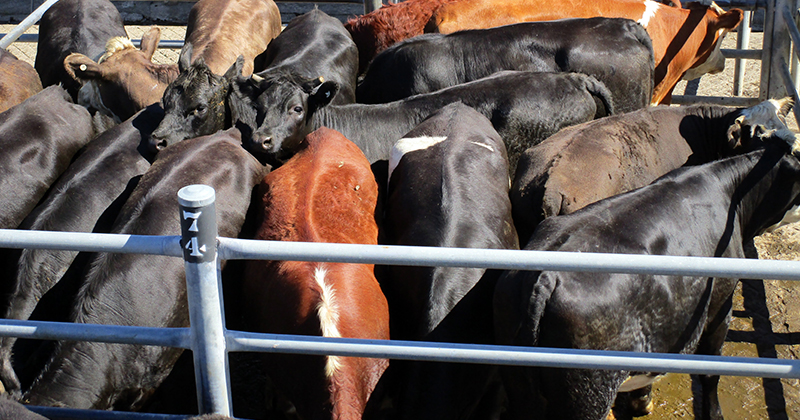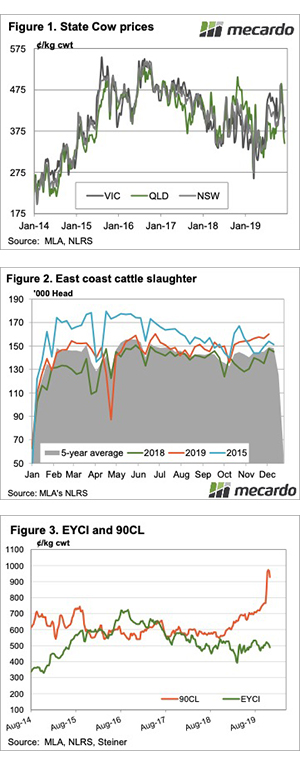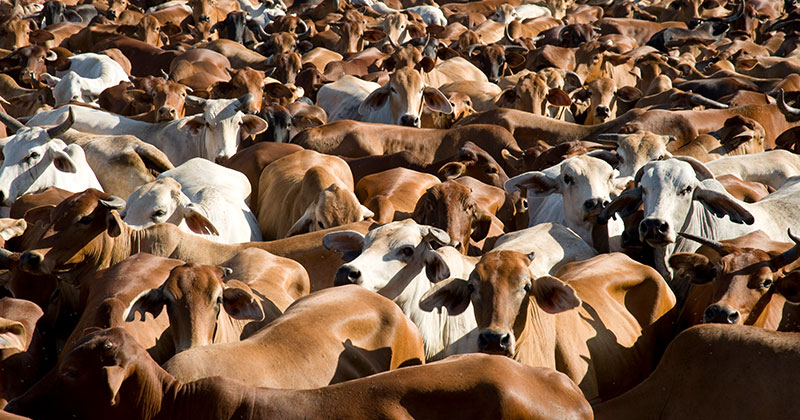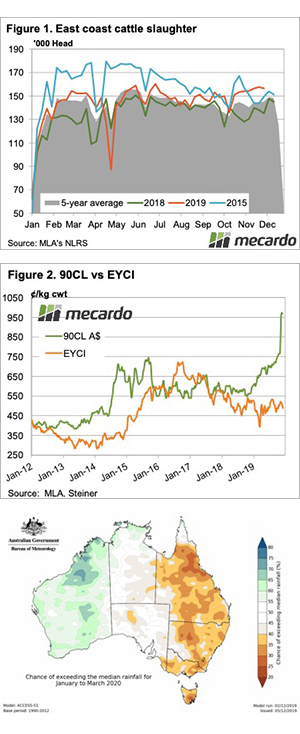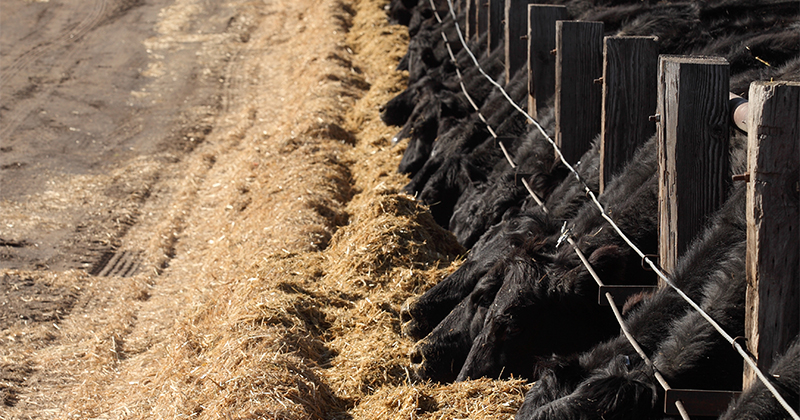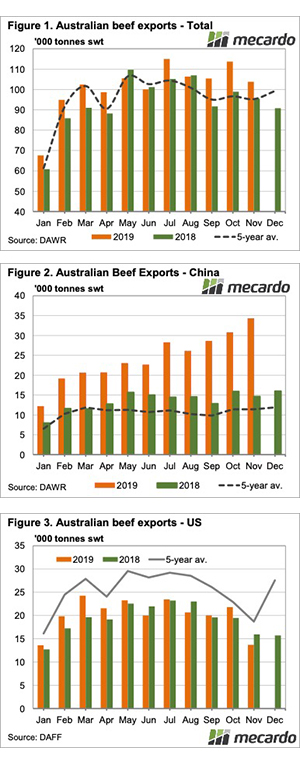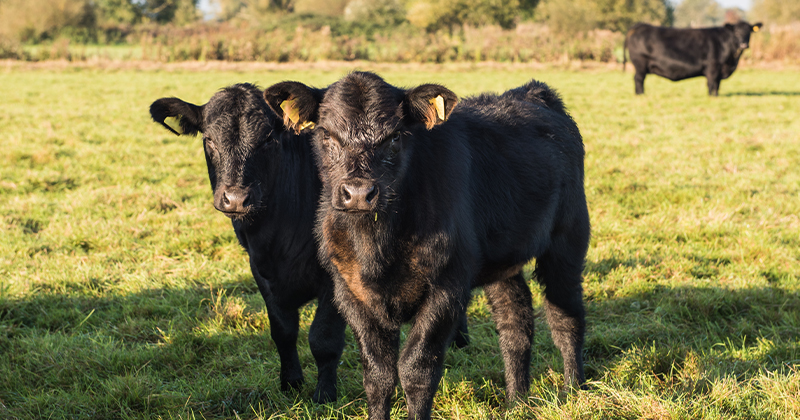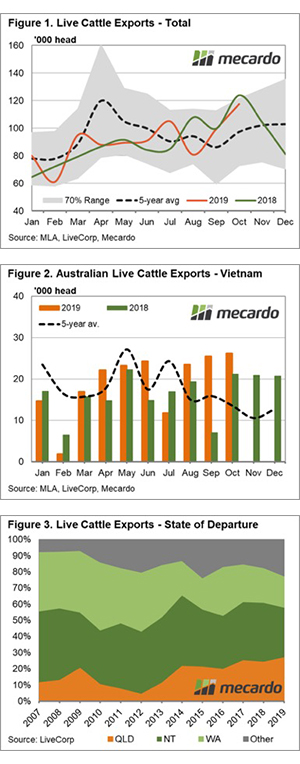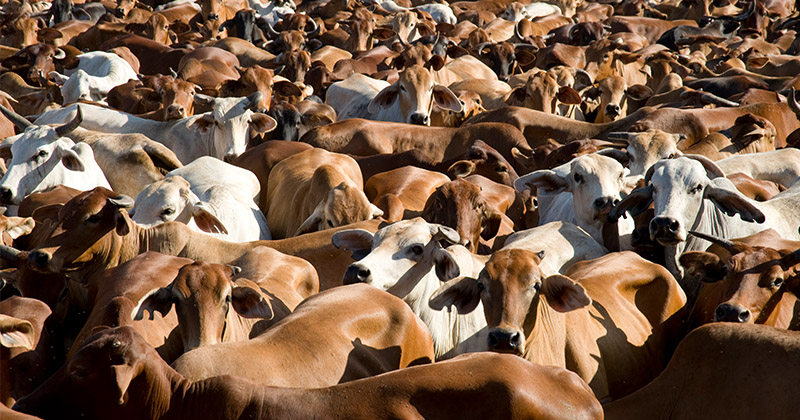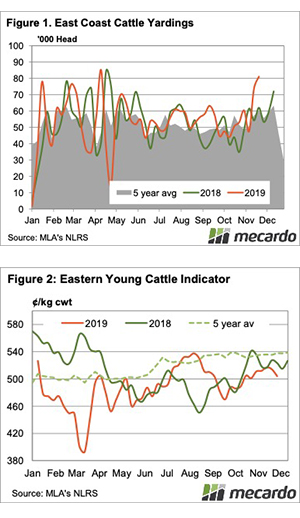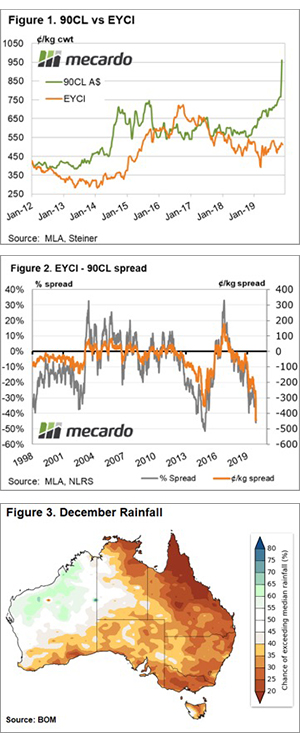The price received in Australia is composed of futures & basis*. It is possible to lock in the futures component through using derivatives (swap/futures etc).
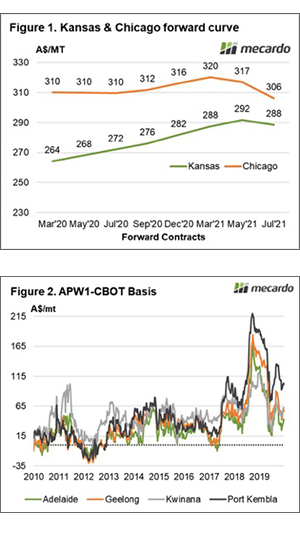
In figure 1 the forward curve is displayed in A$/mt. The forward curve shows the futures price for forward contract months.
The December 2020 contract which aligns with the Australian harvest is currently trading at A$316/mt. This is the highest level in five years, and provides a strong starting point for marketing grain.
As mentioned before the futures price is one component albeit one which makes up the majority of price (even in drought years – see here).
If using swaps/futures, the final price you receive will effectively be your futures price (A$316) plus basis at the point of physical sale.
In figure 2 the weekly average basis is displayed since 2010. As we can see the past year and a half is probably not a reliable indicator due to the drought led basis. However, the average across the country is:
- Adelaide A$28
- Geelong A$37
- Kwinana A$49
- Port Kembla A$51
- Port Lincoln A$24
On the law of averages locking in futures and selling on average basis would return between A$340 & A$366. A price that is historically attractive.
*For the purpose of this analysis we are not including FX, and basing on a converted futures price.
Remember to listen to the Commodity Conversation podcast by Mecardo
What does it mean/next week?:
The futures market is currently offering strong levels for December 2020. A large proportion of the rise in recent weeks has been due to geopolitical factors – which could lead to volatility.
At present these are high levels compared to the last five years. If you lock in a little at these levels, and it turns out to be the worst trade you do – it is still likely to be profitable.
Little and often wins the day.


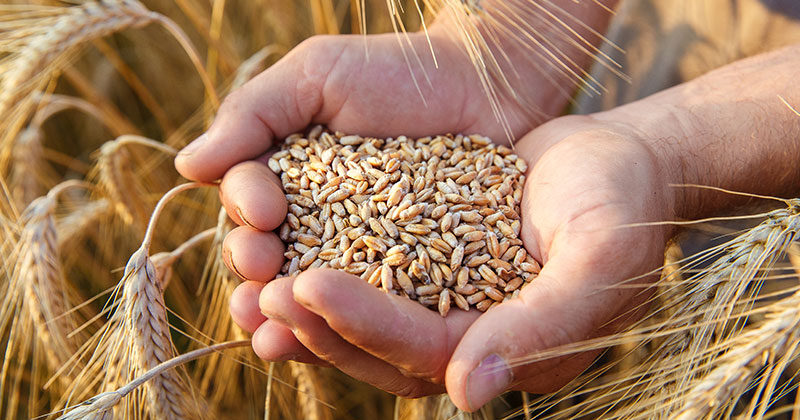

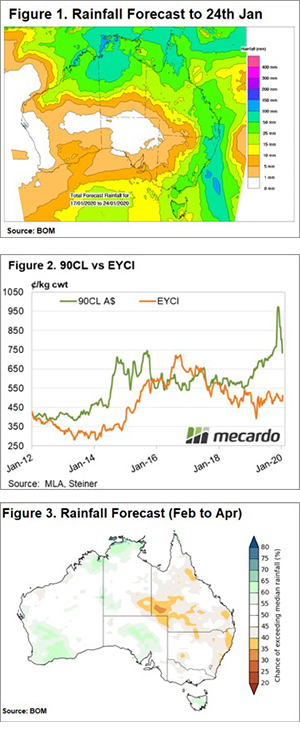

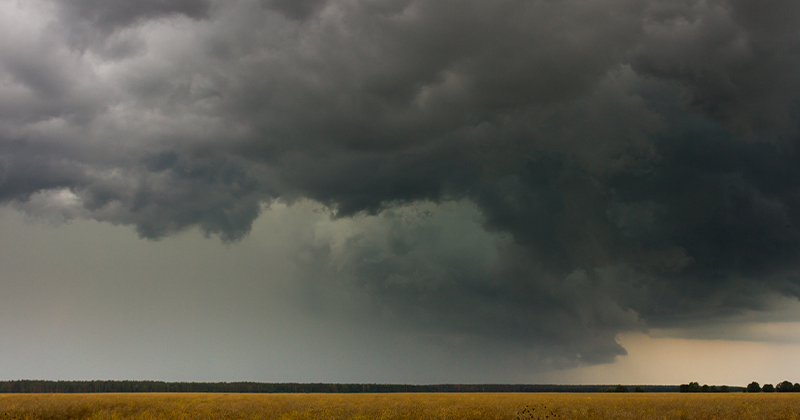
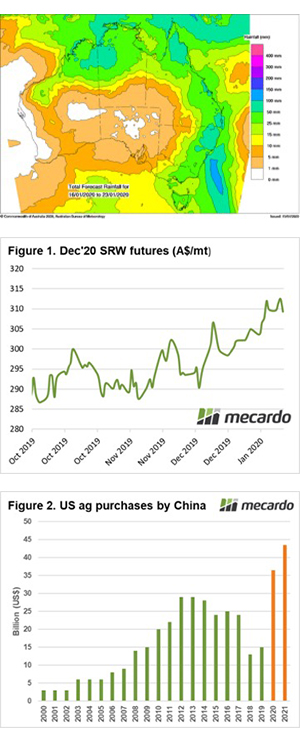
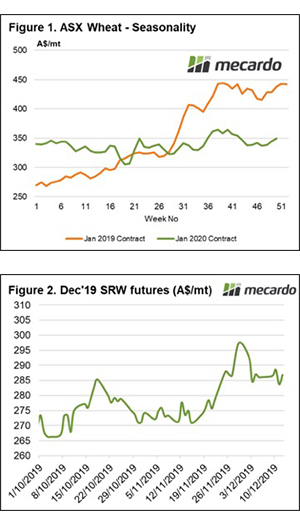 The ASX contract has risen dramatically during the past week, at the end of last week the December 2020 was trading at a weekly average of A$344 and has now moved up to A$349 (figure 1). There are concerns from feed consumers related to the slow pace of harvest in Victoria, which is driven both physical and futures levels higher.
The ASX contract has risen dramatically during the past week, at the end of last week the December 2020 was trading at a weekly average of A$344 and has now moved up to A$349 (figure 1). There are concerns from feed consumers related to the slow pace of harvest in Victoria, which is driven both physical and futures levels higher.